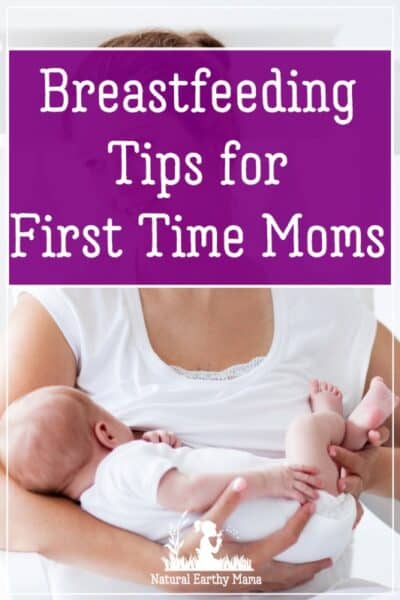 Speaking from experience, being a new mom is the most terrifying – fulfilling adventure! You’ve probably heard that breast is best. Well, according to the Center for Disease Control and Prevention, 81% of women try breastfeeding, but one-third give up before the sixth month. I know you want what’s best for your baby. These tips will help you breastfeed your little munchkin successfully.
Speaking from experience, being a new mom is the most terrifying – fulfilling adventure! You’ve probably heard that breast is best. Well, according to the Center for Disease Control and Prevention, 81% of women try breastfeeding, but one-third give up before the sixth month. I know you want what’s best for your baby. These tips will help you breastfeed your little munchkin successfully.
Benefits Of Breastfeeding For You And Baby
Did you know that breastfeeding helps both you and baby? Here are some interesting benefits of breastfeeding.
Please read: This information is provided for educational purposes only and is not intended to treat, diagnose or prevent any disease. We encourage you to make your own health care decisions in partnership with a qualified health care professional.
This post contains affiliate links, this means at no extra cost to you, we make a commission from sales. Please read
our Disclosure Statement
- Breast milk gives your baby some of your antibodies, which help fight off disease while your baby’s immune system is still growing. Their system is not yet fully developed, so you get to help them get protection from colds while they work out how to do so for themselves.
- It’s an excellent way for you to bond with your newborn. Both of you are probably scared, which is why breastfeeding is a great way for you guys to connect and bond over a drink.
- Losing those pre-preggo pounds is a great by-product of breastfeeding. You could lose a tenth of pound a day if you are exclusively nursing.
What You Need To Know About Breastfeeding
No one is a born breastfeeder; you have to learn how to do it. As you gain more experience, you and baby will find what works best for both of you. Here are a few pointers to get you started.
Latching
Babies are born with the instinctive ability to latch onto the breast and start feeding.
However, you have to make sure your child latches on correctly to prevent pain or discomfort and that you little dearie feeds appropriately.
If your baby latches on correctly right from the beginning, you are more likely to stick to breastfeeding in the long run.
Bubba should have your full nipple in their mouth and a little bit of the dark part around your nipple as well. Make sure their tongue is down, and their lips are turned outwards towards your breast.
If you hear any smacking sounds, you are probably not doing it right.
If you are having problems with the latch, try removing the baby and starting over. Some recommend putting your little finger at the corner of the baby’s mouth.
I wouldn’t want a finger in my mouth, so I’ve always just thought babies may not quite like it either.
What has worked for me is to gently pull down on the baby’s chin to get their mouth to open and quickly remove the nipple. Then try again. Or press down on your breast near the baby’s mouth, which usually gets them to release the suction.
A good latch helps you avoid pain. Breastfeeding your new baby shouldn’t be sore. You can expect a little bit of discomfort but pain is a sign something’s not right.
Experts recommend trying to latch baby on in the first hour after birth. Remember to ask the nurse or doula to check your baby’s latch to see if you are doing it right.
Position
How you hold your baby can make or break the breastfeeding experience. A good position helps them to latch on. Not only that, but your comfort is essential as well. A breastfeeding session can last anything from 20 to 45 minutes so make sure the position is comfortable for both of you.
The only way to find the best positions for you is to try them all out. Do some trial and error with the different recommended positions until you find what feels most natural for you.
Frequency
You may be worried that you are not feeding your baby enough. Relax, mommy, you will not starve baby, they will let you know when they are hungry. Watch out for signs like putting the tongue out, squirming, and moving towards your breast when you hold them.
As a rule of thumb, try to get in a feeding every couple of hours. Two to three-hour intervals are a good start. As they grow older, a routine will work itself out. You don’t have to stick to a fixed way.
Your new baby is always hungry; you would be too if you had such a tiny tummy and lived off milk. They’ll start showing signs of hunger around those times.
If you have a champion napper, you might have to wake them up for feeds. Just remember not to wait until they start crying. Crying is the last-ditch hunger call, and it’s much harder to get them to latch correctly in between screams.
Breastfeeding a baby stimulates milk production, so the more you feed, the more milk your body produces. In the early days, try to nurse as often as possible to get your body to produce enough milk.
RELATED: How to improve milk supply
Left or Right?
Make an effort to switch between breasts at every new feed, not in the middle of feeds. Most experts say foremilk is not as rich in fat as hindmilk.
So try to get the baby to empty one side at a time. If they still want to nurse some more, you can gladly switch them onto the other side. If your baby seems to be full after feeding on one breast, start on the other breast in the next feed.
Just remember to switch sides. If you keep feeding on the same side, you will end up with lopsided breasts (and very sore!)
The best thing is that alternating between breasts will help to get your milk supply up. However, once you get into a routine as your baby grows, do one at a time for each feed.
How Do You Know If Baby Is Nursing Properly?
Look at their jaw when they are feeding; it will come slightly down when they swallow. You should be able to hear a swallowing sound if they are suckling well. If you don’t see any of these signs, your baby may be using your breast as a pacifier, or milk may not be coming out.
In the first few days, your body produces colostrum, which is packed with goodness for your baby. Your milk usually sets in later.
Sometimes, though, breastmilk may take a little bit longer to come in, which is why you must watch out to see if the baby is actually feeding or just pacifying at your breast.
RELATED: How to tell if your baby is getting enough milk
What About When They Get Full?
Don’t worry; it’s not possible to overfeed the baby. If they latch off on their own or turn away from the breast, they are probably full. Other signs that your baby may be full are; they fall asleep and generally show signs of being happy, content, and not fussy.
It would be great to have them say, “mommy, I’m full.” Since this is not possible, you just have to watch for the signs. If you are regularly feeding and little Cupcake shows no signs of interest in nursing, they’re probably just full.
It can be stressful, not knowing if they’re getting enough milk. The best way to tell is to watch how the baby is growing. Regular check-ups will show if your baby is gaining enough weight.
Another way to tell if your baby is getting enough is the trusted diaper patrol. You should get plenty of wet diapers and a few runny poo ones.
Can I Use A Pacifier?
Most babies can switch easily between the pacifier and breast nipple. But when they are very young, it might be a good idea to avoid it. Some babies will get nipple confusion and not be able to latch on well. Or they may tire out from suckling and not do so well on the breast. Try holding off the pacifier until they are a little older.
RELATED: How to safely store breast milk
Will Breastfeeding Hurt?
Breastfeeding is not supposed to hurt, but the truth is in between the latching trials, letdowns, and baby’s first teeth, it can get really sore. Try using some nipple cream to get some relief.
If you have an oversupply of milk, pump it out to relieve some pressure before feeding the baby. It hurts if the baby latches on to a full breast.
After The Feed
Your baby might bring back up some milk-colored spit-up, which is perfectly fine; be ready for lots of cloth changes. It helps to burp the baby after every feed to avoid this.
To do this, gently lay the baby on their stomach on your lap and lovingly rub their back. Or put their tummy against your chest and pat their back.
Keep a burp cloth ready; burps can get messy.
Final word on Breastfeeding for a first time mom
Word to the wise, get yourself a good nursing pillow. It makes for adequate comfort.
Being a new mom can be overwhelming, and breastfeeding is not as easy as it looks in the pictures. But rest easy; plenty of moms have gone through the same and aced it.
Remember to consult with a lactation expert or your doctor if you feel any pain.




